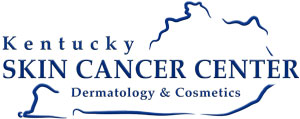As the leading form of cancer in the United States, skin cancer affects millions of adults at any given time. It’s so common, in fact, that about 9,500 Americans are diagnosed with skin cancer every single day, and an estimated one in five people — or 20% of the U.S. population — can expect to develop the disease at some point in their lives.
Fortunately, skin cancer has a remarkably high cure rate when it’s detected early and treated properly. At Kentucky Skin Cancer Center, fellowship-trained Mohs micrographic surgeon Dr. Robert Skaggs provides both regular skin cancer screenings for prompt detection and precise cancer removal techniques to ensure complete eradication and optimal healing.
Unlike conventional surgical excision, Mohs micrographic surgery takes a minimally invasive approach to skin cancer treatment. Here’s what you need to know about Mohs surgery.
Mohs surgery basics
First developed by general surgeon Frederic Mohs in the 1930s, Mohs micrographic surgery is a highly advanced skin cancer removal method designed to eliminate skin cancer completely and precisely, while simultaneously preserving as much healthy tissue as possible.
Unlike standard surgical excision, which extracts the cancerous lesion along with a wide margin of surrounding skin to ensure complete removal, Mohs surgery aims to get rid of all cancer cells while preserving healthy tissues.
Mohs surgery makes it possible to remove all cancer cells, including lesions that have irregular boards or spread inward like tree roots, all while sparing healthy skin tissues. This is especially valuable in areas like your face, eyelids, nose, fingers, toes, and genitalia, where it’s important to minimize damage for cosmetic and functional reasons.
How to prepare for Mohs surgery
Although Mohs surgery is an outpatient procedure, it still requires a certain degree of advanced preparation. If you’re preparing to undergo Mohs surgery, follow these following guidelines to help ensure an optimal outcome:
Two weeks before surgery
At least two weeks before your scheduled surgery, discuss your upcoming Mohs procedure with your primary care physician to determine if you should take a course of preoperative antibiotics, which are often recommended as a precautionary measure for patients who’ve recently had heart surgery or joint replacement surgery.
If you take blood thinners to treat cardiovascular disease, you may be advised to stop taking your medication for one to two weeks prior to your procedure. If your doctor feels it’s too risky for you to discontinue your heart medicine, however, you may be advised to keep taking it as prescribed.
If not prescribed by your doctor, you should also stop taking aspirin, ibuprofen, and naproxen for one to two weeks before your surgery to reduce your risk of excessive bleeding.
Because tobacco interferes with wound healing, you should abstain from any form of tobacco use (smoking, vaping, chewing) for two weeks before (and two weeks after) your surgery.
One week before surgery
To prevent elevated blood pressure and further reduce your risk of excessive bleeding, you should refrain from drinking alcohol and taking certain supplements (vitamin E, vitamin C, fish oil, ginseng, ginkgo biloba, and garlic) in the week leading up to your procedure.
The day of your surgery
On the morning of your procedure, bathe or shower as you normally would, taking extra care to clean the general surgical area well. Don’t put any lotion, perfume, or cosmetics on the area of your skin that’s going to be treated, and opt for loose-fitting, comfortable clothes.
Eat a normal breakfast and pack some snacks as well as a book or electronic device to help pass the time during the procedure itself. Unless otherwise directed, you should also take all of your prescribed medications as scheduled (bring any medication you don’t take in the morning to your appointment).
What happens during the procedure
It can be stressful to undergo any type of surgical procedure, especially when that procedure is often described as “painstaking” and “meticulous.”
Many skin cancer patients are pleasantly surprised, however, that the most challenging thing about Mohs surgery is the amount of time it can take (usually one day).
The procedure starts with a local anesthetic injection to numb the treatment area and keep you comfortable. The visible part of the cancerous lesion is removed first, along with a thin layer of surrounding tissue (marked for reference) which is carefully examined under the microscope for cancer cells.
In up to 50% of cases, Mohs surgery takes just one stage to complete, meaning the first layer of surrounding skin tissue is clear of cancer cells. If the tissue isn’t clear, you’ll receive another anesthetic injection and another thin layer will be removed from any sections of skin that still contain cancer cells.
While it only takes a few minutes to remove the sample, it can take up to an hour to analyze it properly. The removal/analyzation process continues until cancer is no longer detected — most cancers are completely removed in just one to three rounds of surgery.
Depending on the extent of your procedure, your wound may be allowed to heal naturally or closed with stitches.
To learn if Mohs micrographic surgery is right for you, call your nearest Kentucky Skin Cancer Center in Bowling Green, Kentucky, or Franklin, Kentucky, to set up an appointment with Dr. Skaggs today!






